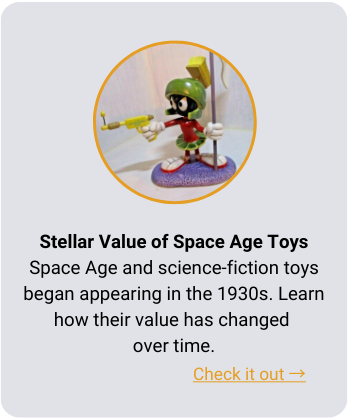#Television #Toys #MidCentury #Era #WorthPoint
Today, television shows and movies always have merchandise tie-ins. Sometimes, it’s a toy line or clothing, and other times, it might be collectible cards or figurines. During the American mid-century, however, toy advertisements on television were just beginning, and some of the more popular shows were the genesis of toys and games that are collectible now.

Although some debate the exact years of the design aesthetic referred to as “mid-century modern,” a range that seems to represent the height of the period is roughly from 1945 to 1970. During this period, a combination of post-war prosperity, the Space Race, and more televisions in homes created the practice of toy manufacturers tying their products to popular shows.
The goal was to use what marketing experts call “pester power,” which involves children seeing an ad on television for a game or toy and pestering their parents to buy it. This was a common marketing strategy, and it worked.
GAMES, SHOWS, AND GAME SHOWS
Television “quiz shows” were popular in the mid-century, and the board games allowed viewers to play their own versions at home. Aimed at children and adults, families bought the home versions of their favorite shows to bring a little of the magic of television into their living rooms. Game nights were a common way for families to spend time together, and some friendly competition in the form of a game show board game was a step up from simpler games like checkers, chess, or Parcheesi.
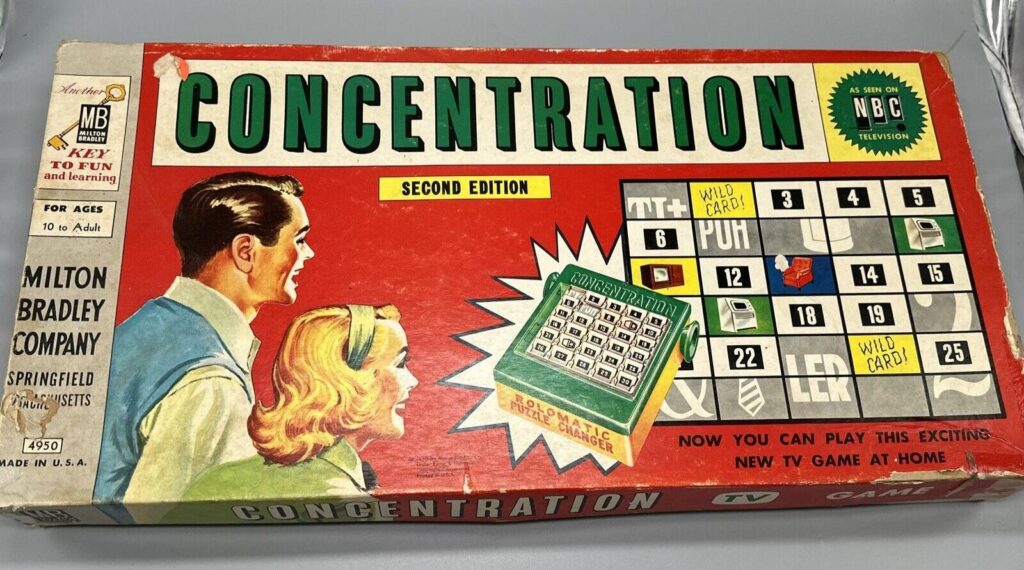
Quiz and game shows were not the only inspiration for television-based games. Shows about crime, the law, or mysteries often had a board game version. One perfect example is the board game based on fictional legal legend and TV attorney Perry Mason, played by Raymond Burr from 1957 to 1966.
Additionally, shows that featured “cops and robbers” made for exciting board games. Fans of shows like Dragnet, The Fugitive, and Car 54, Where Are You? all had home game versions. Players could solve a mystery, move cars around a board, and hopefully capture the bad guys.
TOYS AND THEIR STORIES
Games were not the only way for fans and viewers to bring home a piece of their favorite show. Toys, especially those from shows enjoyed by children, were all over the store shelves. The toys echoed the show genres of the time, whether a kid liked cowboy shows, adventure stories, or shows with animals like Lassie. Children also wanted toys from shows that featured kids similar to themselves, like Dennis the Menace or Leave it To Beaver. Some of the most collectible toys of today came from television shows that ruled the airwaves in the 1950s and 1960s. By category, here are some toys children and collectors enjoy.
Space Toys
While Woody and friends from Toy Story may have lamented the advent of space toys, during the mid-century, every kid wanted to be an astronaut or a space explorer living on a faraway planet. Millions tuned in to shows like Lost in Space, The Jetsons, and Space Patrol. One of the most well-known robots on television, the Model B-9 from Lost in Space, was sold at Julien’s in December 2023. Collectors who missed out on that auction can still find toys from the show for sale online or at estate sales.
Westerns
In the 1950s and ’60s, shows that featured cowboys, wagon trains, and gunslingers were hugely popular with children. It was a different time, and parents had no problem letting their kids watch shows like Gunsmoke and The Rifleman. Shows that featured Western themes or depicted rural life were all about stagecoach robberies and cattle rustling rather than little houses or mountain families facing life during the Great Depression. Kids can re-enact Wild West battles between cowboys and American Indians with toys from these shows, including cap gun sets and outpost play sets.
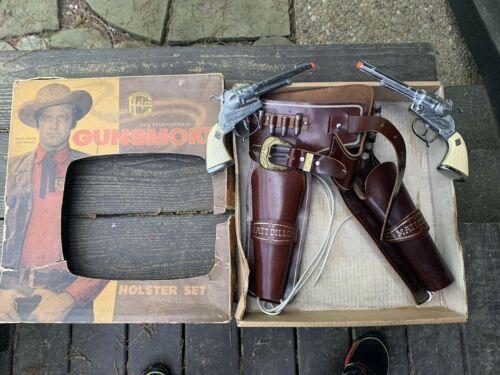
Medical Shows
Most medical shows were for adult audiences, but the toys from them resonated with children who wanted to grow up and become doctors like Ben Casey or Dr. Kildare. One show in particular was groundbreaking for the time since it was one of the first to feature a middle-class African American family. Julia, which ran from 1968 to 1971, featured actress Diahann Carroll as a widow and mom who worked as a nurse. Mattel, the creator of Barbie, introduced a Julia doll that is highly prized by collectors today.
Family Sitcoms
Mid-century family shows were a hit with adults and children alike, and the toys that came from them continue to be popular with collectors, some of whom remember the shows from their childhoods. A doll that many would recognize came from the sitcom Family Affair is Mrs. Beasley, carried by Buffy Davis in the show.
Every little girl that watched had to have one of their own. Fun fact: There are two Mrs. Beasley dolls that collectors look for. The first, made by the Rushton Company, had a rubber face and a cloth head and was actually “Jill,” a doll already made by the company to go with a boy doll named Jack.
Producers used the doll in the show’s pilot episode, but Mattel wanted a product tie-in, so it produced a similar version that Buffy carried and was available in stores. The Rushton version is harder to find and usually sells for more than the Mattel version.
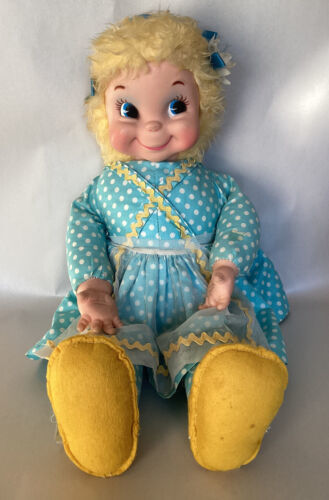
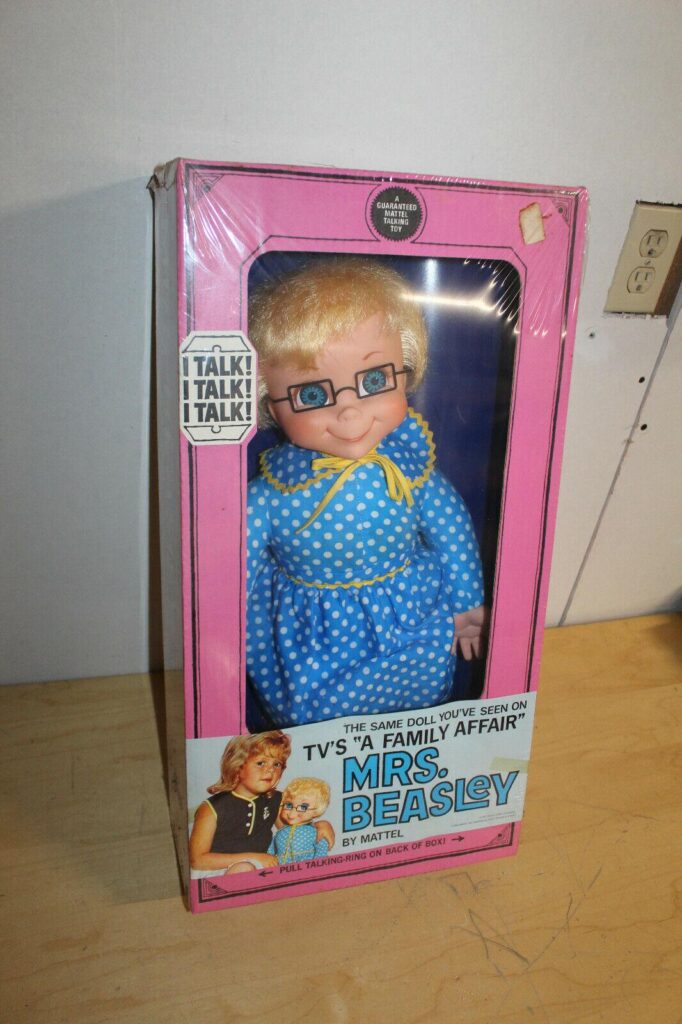
FINDING THESE VINTAGE TOYS
Like most collectors, those who like toys and games jealously guard their pieces and shopping spots. Online auction sites like eBay will have a good selection of pieces, but buying any vintage item that can’t be visually inspected, held, and examined in person is hard. Pictures are sometimes just not enough.
Toy collectors often find rare or vintage toys at estate sales, such as this epic find in Massachusetts. Seniors who are downsizing sometimes save toys that their children played with in case their grandchildren might want them. Garage sales can also be a good place to look for vintage toys or games.
It’s important to know that some shows from the mid-century era with toys or games associated with them will often re-issue the classic toys in reproductions as “anniversary” merch. Original vintage items will hold their value better than repros, but if you want a toy as a way to spark a happy childhood memory, it can usually be found online at affordable prices.
Adults who remember stretching out on the living room floor with a doll or a space robot and waiting for that favorite show to come on usually have a couple of vintage toys on a shelf somewhere as a memory they’d never sell. I know I will not give up my I Dream of Jeannie hat, which even came with a blonde ponytail.
Brenda Kelley Kim lives in the Boston area. She is the author of Sink or Swim: Tales From the Deep End of Everywhere and writes a weekly syndicated column for The Marblehead Weekly News/Essex Media Group. When not writing or walking her snorty pug, Penny, she enjoys yard sales, flea markets, and badminton.
WorthPoint—Discover. Value. Preserve.


